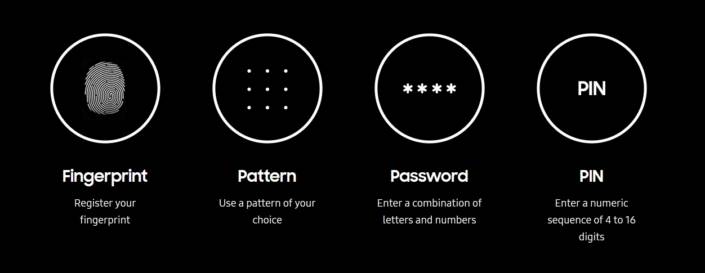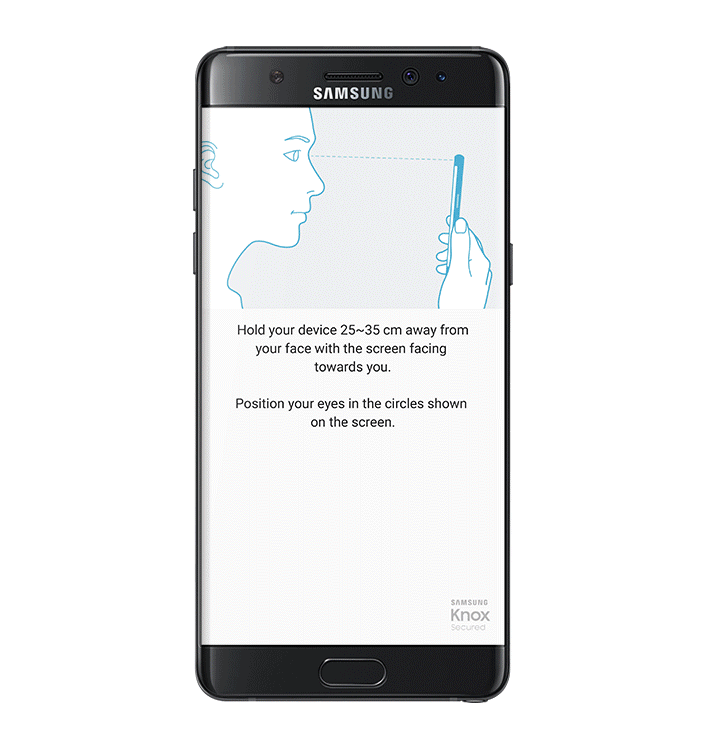Security has become one of the biggest issues in today’s technologically-connected society. We use mobile devices to transfer money, pay bills, and even to share our health information. Nevertheless, most users don’t want to spend a great deal of time thinking about the security of their device. They expect security to be seamlessly integrated into any technology they use.
As a result, leading mobile device manufacturers are beginning to integrate security features, such as two-factor biometric authentication to make devices more secure for their users.
Samsung Electronics is one of these mobile solution providers. The company is using fingerprint or iris scans for optimum security in their new devices. With this identity security technology, you literally become your password. These elements are extremely helpful pieces of a complete security chain, designed to protect a user’s identity and critical personal and financial information.

The Demand for Tougher Protection
While passwords remain the most popular form of identity protection, if users aren’t careful, they can be exploited. Often, individuals maintain poor security practices, such as reusing passwords, choosing weak ones and sharing them with others. It’s also not uncommon for people to divulge their passwords over email or phone calls, increasing the risks of compromised security.
At the same time, password can be compromised via social engineering, with fraudulent phone calls or phishing emails being two of the most common forms. Passwords are also easier to exploit remotely, making a hacker’s job simpler.
As I’ve written before, this all points to the need for a new mobile security paradigm, one based on hardware-based multifactor authentication and biometric security.
Biometrics Unlocks New Functionality
Biometric security has been used in the mobile industry as far back as 2011, when leading mobile device manufacturers brought fingerprint technology into the mainstream. Since that time, biometric technology has changed the experience and daily life of the mobile user. While at first, fingerprint technologies were a way to unlock devices, today they are becoming integrated seamlessly into mobile platforms and services. The mobile payment service, Samsung Pay, is a good example.
And while the technology behind fingerprint authentication and biometrics is important, the functionality and benefits to users has been equally critical to its continued uptake.

Iris Scanning can Enhance Security and Improve Ease of Use
Simultaneously, iris scanning continues to gain popularity. Using the human eye to unlock doors or access devices was formally reserved for movies, but thanks to the miniaturization of technology, iris scanning is quickly bringing enhanced security to consumers. In fact, according to research findings, iris recognition technology is expected to grow by more than 20 percent between now and 2020.
Because the human iris is so complex, it’s the most difficult to accurately replicate, making the iris scan among the most secure technologies. Accurate iris scanning recognizes 266 unique traits, while fingerprint scanning recognizes only 40, making it more rigorous than fingerprint authentication – currently the most popular form of biometric authentication.
And because iris scanning only requires a user to look at the device, it’s also simple and user friendly. While biometric authentication helps improve device security, it also helps improve usability by decreasing the time to unlock and helping to eliminate passwords.
Today’s Iris Scanning Challenges
While iris scan technologies may provide more uniquely identifying data, there are still some challenges. First and foremost, it needs to work as well, or better, than current fingerprint technology. People expect biometric authentication to be quick and painless. If it isn’t, they won’t use it.
Iris scanning technologies must also be able to work alongside other biometric technologies for added security. People also need to be able to trust iris scanning technologies, which means the biometric data needs to be securely stored and verifiably as safe as other biometric alternatives.
Iris scans also suffer from the same issues that other forms of biometric authentication do in that they rely on application developers and operating systems to enable biometric authentication outside of just unlocking the device. Leading smartphone companies like Samsung are well positioned to advance the use of new biometric technology like iris scanning and have the infrastructure that allows users utilize their biometric data for more than just unlocking a phone.

Iris Scanning Evolves with the Latest Devices
I used iris scanning on the Samsung Galaxy Note7 and was impressed by its speed and ease of use. Much like a fingerprint scanner, it is responsive and offers a level of security that provides peace of mind without hampering the general use of the phone. The functionality and freedom thanks to the Note7’s biometric security were also positives. The device allows for different levels of security depending on the sensitivity of the data and application. Users can login either via iris scan or fingerprint scan. Samsung’s mobile enterprise platform Knox Workspace also allows for multi-factor authentication with a password, pin or pattern when combined with an iris scan or fingerprint.
The Note7’s iris scanning capability could be more secure than previous generations thanks to the increased points of comparison and difficulty of spoofing as well as lower false acceptance rates.
In short, Samsung with the new Galaxy Note7 with Knox, could completely change mobile security as we know it. It has the potential to shift the landscape and help introduce a new generation of more secure mobile devices. It could also influence the uptake of iris scanning technology as a new global standard of mobile security.
*The views expressed in this editorial are the author’s own, and do not necessarily reflect the official opinion of Samsung Electronics.
**All functionality features, specifications and other product information provided in this document including, but not limited to, the benefits, design, pricing, components, performance, availability, and capabilities of the product are subject to change without notice or obligation.
| About Patrick Moorhead |
| Patrick founded the firm based on in his real-world world technology experiences with the understanding of what he wasn’t getting from analysts and consultants. Four years later, Patrick is consistently ranked in the top echelon of all technology industry analysts in terms of “power” (via ARInsights) and is consistently top ranked in “press citations” (via Apollo Research). Moorhead is a contributor for both Forbes and CIO. He a broad-based analyst covering a wide variety of topics including the software-defined datacenter and the Internet of Things (IoT), and Patrick is a deep expert in client computing and semiconductors. He has 25 years of experience including 15 years of executive experience at high tech companies leading strategy, product management, product marketing, and corporate marketing, including three industry board appointments. You can find Patrick’s full biography here. |







